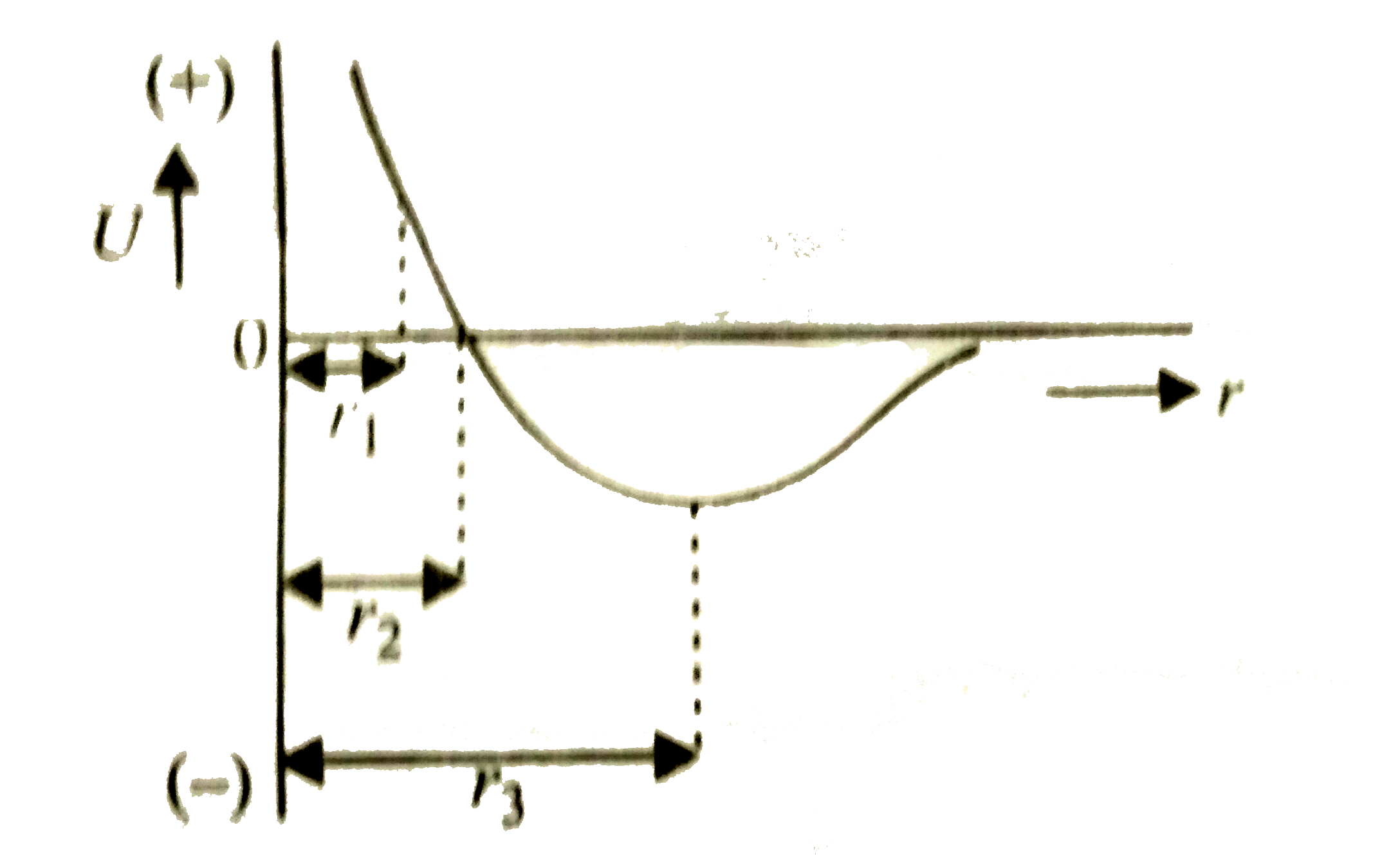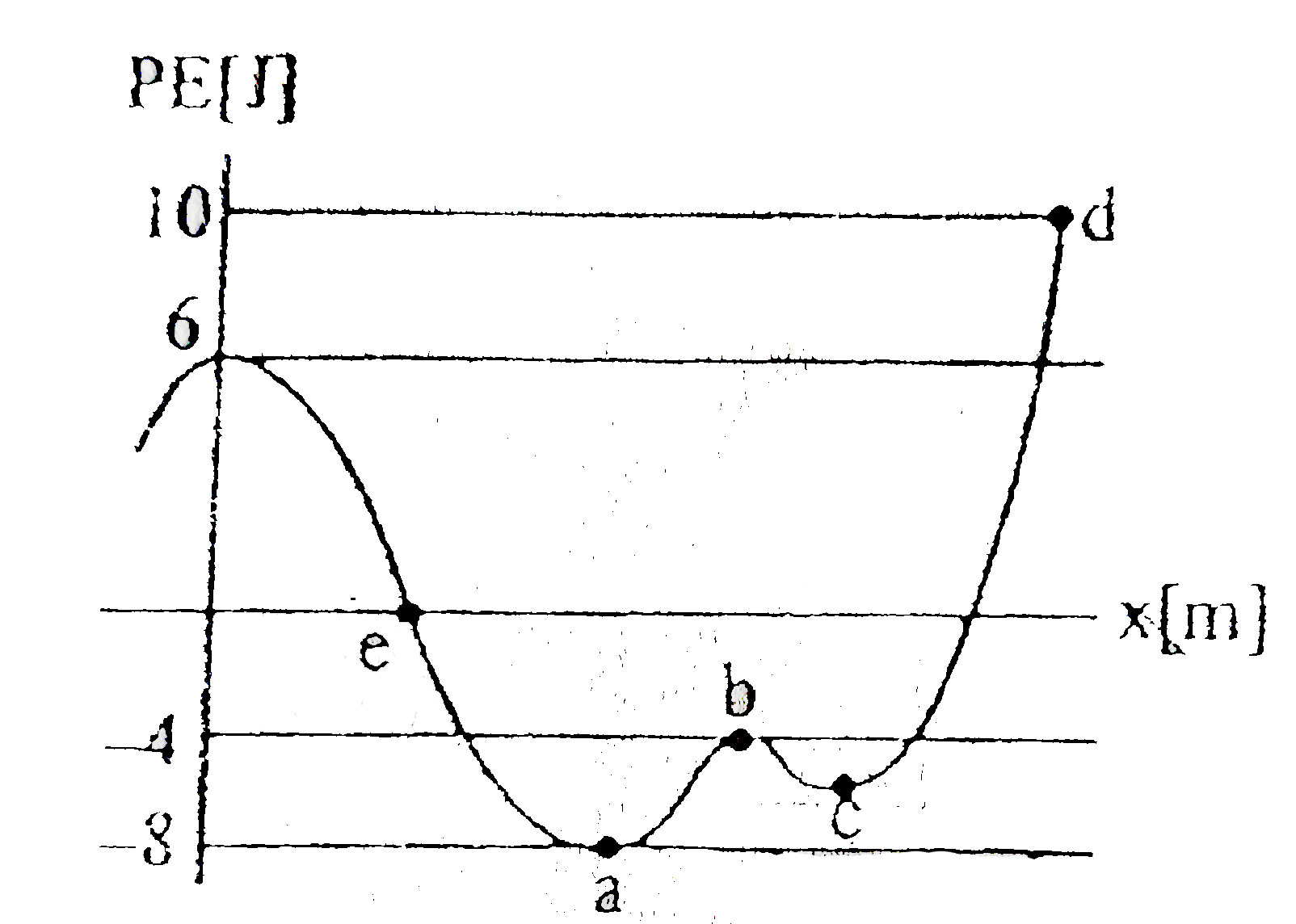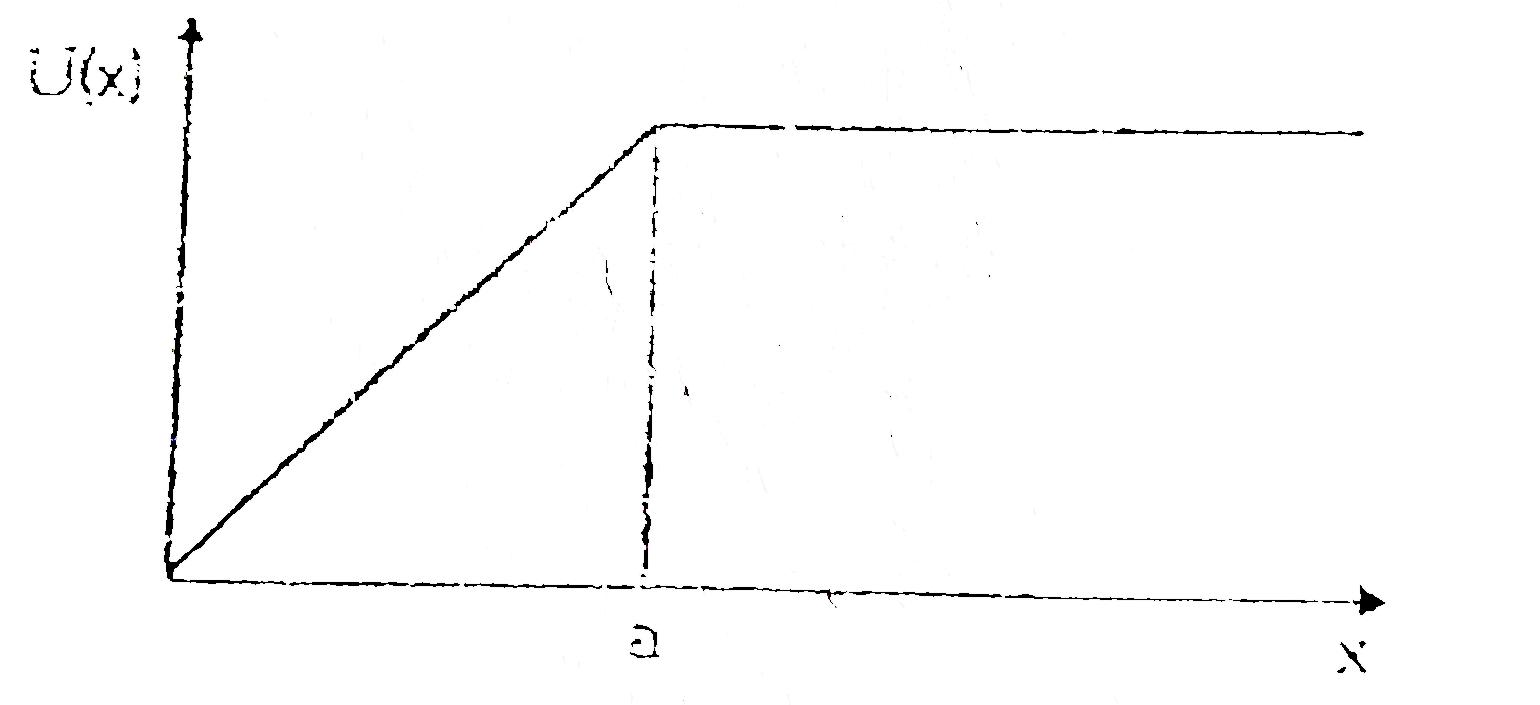Draw a plot of potential energy of a pair of nucleons as a function of their separation . Write two important conclusions which you can draw regarding the nature of nuclear forces .
Step-by-Step Solution
1. Understanding the Potential Energy of Nucleons:
- The potential energy (V) of a pair of nucleons (protons and neutrons) depends on their separation (R). As they come closer, the potential energy changes due to the nuclear forces acting between them.
2. Plotting the Graph:
- On the x-axis, represent the separation (R) in femtometers (fm).
- On the y-axis, represent the potential energy (V) in mega electron volts (MeV).
- The graph typically shows a curve that decreases as the nucleons approach each other (indicating attractive forces) and then increases sharply when they are very close (indicating repulsive forces).
3. Identifying Key Points:
- Mark the equilibrium point (R0) on the graph where the potential energy is at a minimum. This point indicates the most stable configuration of the nucleons.
- The area to the left of R0 represents attractive forces, while the area to the right represents repulsive forces.
4. Conclusions:
- Conclusion 1: Nuclear forces are attractive and stronger than electrostatic forces. This is evident from the steep drop in potential energy as nucleons approach each other, indicating a strong attractive force.
- Conclusion 2: Nuclear forces are charge-independent. This means that the force between nucleons does not depend on whether they are protons or neutrons, which is reflected in the uniform nature of the potential energy curve.
- The potential energy (V) of a pair of nucleons (protons and neutrons) depends on their separation (R). As they come closer, the potential energy changes due to the nuclear forces acting between them.
- On the x-axis, represent the separation (R) in femtometers (fm).
- On the y-axis, represent the potential energy (V) in mega electron volts (MeV).
- The graph typically shows a curve that decreases as the nucleons approach each other (indicating attractive forces) and then increases sharply when they are very close (indicating repulsive forces).
- Mark the equilibrium point (R0) on the graph where the potential energy is at a minimum. This point indicates the most stable configuration of the nucleons.
- The area to the left of R0 represents attractive forces, while the area to the right represents repulsive forces.
- Conclusion 1: Nuclear forces are attractive and stronger than electrostatic forces. This is evident from the steep drop in potential energy as nucleons approach each other, indicating a strong attractive force.
- Conclusion 2: Nuclear forces are charge-independent. This means that the force between nucleons does not depend on whether they are protons or neutrons, which is reflected in the uniform nature of the potential energy curve.
Topper's Solved these Questions
- XII BOARDSBOOK - XII BOARD PREVIOUS YEAR PAPER ENGLISHCHAPTER - XII BOARDSEXERCISE - SET -II
9 Videos
- XII BOARDSBOOK - XII BOARD PREVIOUS YEAR PAPER ENGLISHCHAPTER - XII BOARDSEXERCISE - SET -III
4 Videos
- XII BOARDSBOOK - XII BOARD PREVIOUS YEAR PAPER ENGLISHCHAPTER - XII BOARDSEXERCISE - SET-III DELHI BOARD
10 Videos
- SAMPLE PAPER 2019BOOK - XII BOARD PREVIOUS YEAR PAPER ENGLISHCHAPTER - SAMPLE PAPER 2019EXERCISE - SECTION D
6 Videos
Similar Questions
(a) Draw the plot of binding energy per nucleon (BE/A) as a function of mass number A. Write two important conclusions that can be drawn regarding the nature of nuclear force.
(b) Use this graph to explain the relase of energy in both the processes of nuclear fusion and fission.
(c) Write the basic nuclear process of neutron undergoing β-decay. Why is the detection of neutrinos found very difficult?
View SolutionDraw a plot of potential energy of a pair of nucleons as a function of their separations. Mark the regions where the nuclear force is (i) attractive and (ii) repulsive. Write any two characteristic features of nuclear forces.
View Solution
Knowledge Check
The potential energy U of two atoms of a diatomic molecule as a function of distance r between the atoms as shown in the given figure.

Read the following statement carefully.
1. The equilibrium separation distance between the atoms is equal to r2.
2. At r=r1, the force between the atom is repulsive.
. Forr>r2, the force between the atoms is attractive
Which of the above statements is true ?A1 onlyBÂ 2 onlyCÂ 3 onlyD2 and 3
(a) Draw a plot showing the variation of potential energy of a pair of nucleons as a function of their separation . Mark the regions where the nuclear force is :
(i) attractive and (ii) repulsive.
(b) In the nuclear reaction
n+235U→92aXe+54 94Sr+2nb determine the values of a and b .
View Solution(a) In a nuclear reaction 32He+32He→42He+11H+11H+12.86 MeV, though the number of nucleons is conserved on both sides of the reaction, yet the energy is released. How? Explain.
(b) Draw a plot of potential energy between a pair of nucleons as a function of their separation. Mark the regions where potential energy is (i) positive and (ii) negative.
View SolutionDraw a plot of the binding energy per nucleon as a function of mass number for a large number of nuclei , 2≤A≤240 . How do you explain the constancy of binding energy per nucleon in the range 30<A<170 using the property that nuclear force is short-ranged ?
View SolutionA piece of ice is heated at a constant rate. The variation in temperature with time of heating is shown in the graph in Fig. 11.6.
(i) What is represented by the part AB ?
(ii) What does the part CD represent ?
(iii) What conclusion do you draw regarding the nature of ice from the graph ?
View SolutionConsider the following sketch of potential energy for a particle as a function of position. There are no dissipative forces or internal sources of energy.

What is the minimum total mechanical energy that the particle can have if you know that it has travelled over the entire region of X shown?
View SolutionThe curve in the diagram shows a potential energy U of two molecules for different values of intermolecular separation r. Which part of the curve represent that the intermolecular force is (i) repulsive, (ii) attractive ?
View SolutionPotential Energy U(x) and associated force F(x) bears the relation F(x)=−ddxU(x).
Dependence of potential energy of a two−particle system separation x between them is shown in the following figure.

Which of the following graphs shows correct variation in assoicated force F(x) with x?
View Solution
